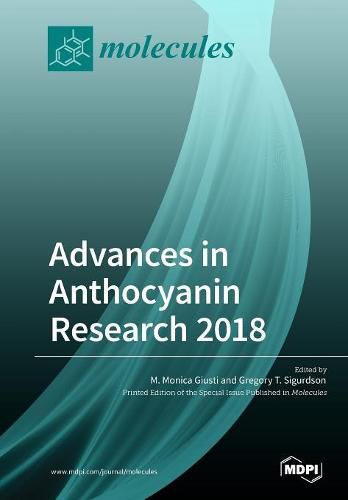Readings Newsletter
Become a Readings Member to make your shopping experience even easier.
Sign in or sign up for free!
You’re not far away from qualifying for FREE standard shipping within Australia
You’ve qualified for FREE standard shipping within Australia
The cart is loading…






This title is printed to order. This book may have been self-published. If so, we cannot guarantee the quality of the content. In the main most books will have gone through the editing process however some may not. We therefore suggest that you be aware of this before ordering this book. If in doubt check either the author or publisher’s details as we are unable to accept any returns unless they are faulty. Please contact us if you have any questions.
Anthocyanins are natural plant pigments, responsible for many of the orange/red/purple/blue colors of many flowers, fruits, and vegetables. These colorants play important roles in plants, such as conferring UV protection and antimicrobial properties, and they are also implicated to have many potential human health-promoting properties. Research works and epidemiological studies have indicated these plant pigments to be beneficial in the reduction of chronic inflammatory diseases, such as type 2 diabetes and cardiovascular disease. For these reasons, there is increasing interest in their incorporation in foods, drugs, cosmetics, and dietary supplements as naturally derived colorants and health-promoting compounds. There is a large natural diversity in the chemical composition of anthocyanin pigments. More than 700 unique anthocyanin structures have been identified, and each has unique colorimetric, reactivity, and health-promoting properties. With such a great number of unique anthocyanins and increasing interest in their use, there is a considerable need to better understand the factors affecting their production and accumulation in plants, the factors affecting their stability and colorimetric properties, and their metabolism and mechanisms for disease alleviation. This Special Issue includes several new research works dedicated to these topics and a review of the current knowledge of anthocyanin chemistry affecting their application in food and nutrition.
$9.00 standard shipping within Australia
FREE standard shipping within Australia for orders over $100.00
Express & International shipping calculated at checkout
This title is printed to order. This book may have been self-published. If so, we cannot guarantee the quality of the content. In the main most books will have gone through the editing process however some may not. We therefore suggest that you be aware of this before ordering this book. If in doubt check either the author or publisher’s details as we are unable to accept any returns unless they are faulty. Please contact us if you have any questions.
Anthocyanins are natural plant pigments, responsible for many of the orange/red/purple/blue colors of many flowers, fruits, and vegetables. These colorants play important roles in plants, such as conferring UV protection and antimicrobial properties, and they are also implicated to have many potential human health-promoting properties. Research works and epidemiological studies have indicated these plant pigments to be beneficial in the reduction of chronic inflammatory diseases, such as type 2 diabetes and cardiovascular disease. For these reasons, there is increasing interest in their incorporation in foods, drugs, cosmetics, and dietary supplements as naturally derived colorants and health-promoting compounds. There is a large natural diversity in the chemical composition of anthocyanin pigments. More than 700 unique anthocyanin structures have been identified, and each has unique colorimetric, reactivity, and health-promoting properties. With such a great number of unique anthocyanins and increasing interest in their use, there is a considerable need to better understand the factors affecting their production and accumulation in plants, the factors affecting their stability and colorimetric properties, and their metabolism and mechanisms for disease alleviation. This Special Issue includes several new research works dedicated to these topics and a review of the current knowledge of anthocyanin chemistry affecting their application in food and nutrition.